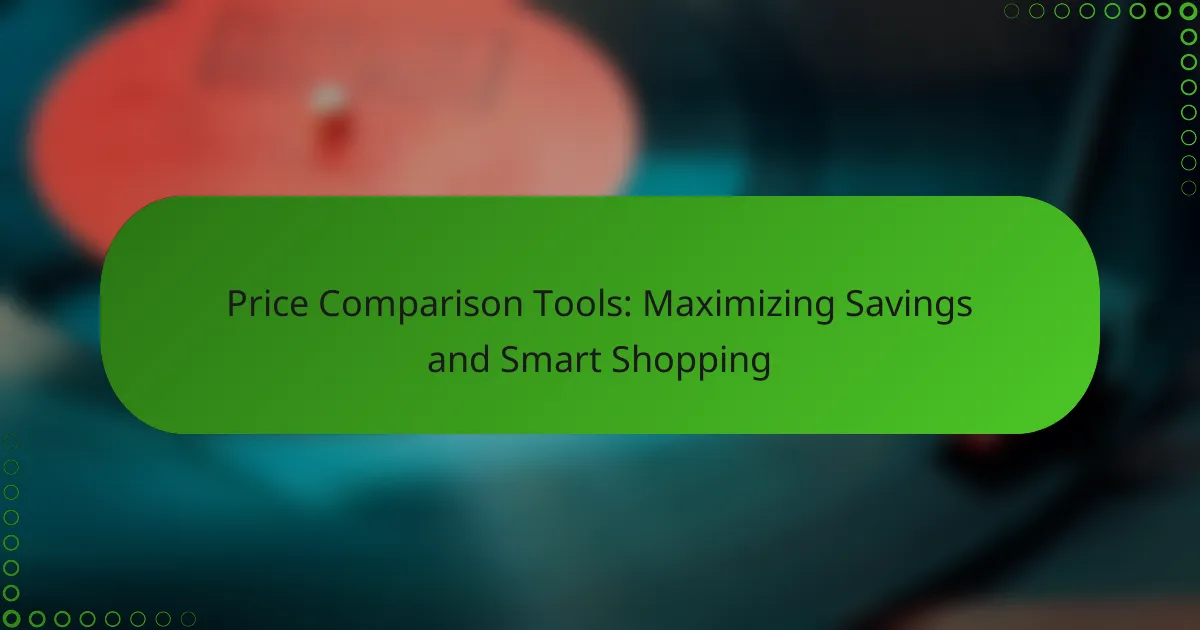Timing your purchases can lead to significant savings, especially during major sales events like Black Friday and Cyber Monday. These occasions, along with post-holiday clearance sales, provide excellent opportunities for budget-conscious shoppers to find discounts across a wide range of products. By aligning your shopping with seasonal trends and holiday promotions, you can maximize your savings and make the most of your budget.

When is the best time to shop for discounts in the US?
The best times to shop for discounts in the US include major sales events like Black Friday, Cyber Monday, and post-holiday clearance sales. These periods typically offer significant savings across various retail sectors, making them ideal for budget-conscious shoppers.
Black Friday sales
Black Friday, occurring the day after Thanksgiving, is renowned for its deep discounts and doorbuster deals. Many retailers offer substantial price cuts, often ranging from 20% to 50% off popular items, making it a prime time for purchasing electronics, home goods, and apparel.
To maximize savings, create a shopping list in advance and compare prices across different stores. Be mindful of limited stock and time-sensitive offers, as popular items can sell out quickly.
Cyber Monday deals
Cyber Monday follows Black Friday and focuses on online sales, providing another opportunity for significant savings. Discounts can be similar to those found on Black Friday, often reaching up to 60% off on tech products, clothing, and more.
Shopping online allows for easy price comparisons and access to exclusive online deals. Set alerts for your favorite retailers to catch flash sales and limited-time offers that can enhance your savings.
Post-holiday clearance
Post-holiday clearance sales typically start right after Christmas and can last into January, offering discounts on seasonal items and excess inventory. Discounts during this time can range from 30% to 75%, especially on holiday decorations, winter apparel, and gift items.
This period is ideal for stocking up on items for the following year or finding bargains on winter goods. Keep an eye out for clearance sections both in-store and online, as retailers aim to clear out inventory to make way for spring merchandise.

What are the seasonal trends for shopping discounts?
Seasonal trends for shopping discounts often align with major holidays and events throughout the year. Retailers typically offer significant sales during these times, making it easier for consumers to find bargains on various products.
Summer sales events
Summer sales events usually occur around major holidays like Independence Day in the United States and various summer festivals in Europe. Retailers often discount outdoor furniture, clothing, and electronics during this period, with discounts ranging from 20% to 50% off.
To maximize savings, consider shopping during holiday weekends when sales are most aggressive. Keep an eye on email newsletters and social media for flash sales and exclusive online offers.
Back-to-school promotions
Back-to-school promotions typically start in late July and run through early September. This season is ideal for purchasing school supplies, clothing, and electronics, with discounts often reaching up to 30% or more.
Plan your shopping around specific sales events like tax-free weekends in some U.S. states, which can further enhance savings. Create a list of essential items to avoid impulse buys and ensure you get the best deals on necessary products.
End-of-season clearance
End-of-season clearance sales occur as retailers make room for new inventory, usually at the end of summer and winter. Discounts can be substantial, often exceeding 50%, especially on seasonal items like winter clothing and summer gear.
Shop early in the clearance period for the best selection, but be prepared to act quickly as popular items can sell out fast. Consider shopping online for additional clearance options that may not be available in-store.

How do holidays affect shopping discounts?
Holidays significantly influence shopping discounts, often leading to substantial savings during specific sales periods. Retailers typically offer promotions around major holidays, making it an ideal time for consumers to take advantage of lower prices.
Holiday sales periods
Major holidays such as Black Friday, Cyber Monday, and Christmas are prime times for shopping discounts. Retailers often provide deep discounts during these periods, sometimes exceeding 50% off on popular items. It’s beneficial to plan purchases around these sales to maximize savings.
Additionally, other holidays like Memorial Day and Independence Day can also feature significant sales, particularly for seasonal items like outdoor furniture and appliances. Keeping an eye on these dates can help consumers find the best deals throughout the year.
Valentine’s Day discounts
Valentine’s Day typically sees discounts on gifts such as jewelry, flowers, and chocolates. Retailers often start promotions a week or two before February 14, allowing shoppers to find deals on romantic items. Expect discounts to range from 20% to 40% off during this period.
However, it’s wise to shop early, as popular items may sell out quickly. Look for bundle deals or special offers that can enhance savings while purchasing gifts for loved ones.
Labor Day promotions
Labor Day is another key holiday for discounts, especially on home goods, appliances, and outdoor furniture. Many retailers offer significant markdowns, often in the range of 30% to 60% off, making it a great time to invest in larger purchases.
Shoppers should be aware that while many items are on sale, the best deals may vary by store. Comparing prices across different retailers can help ensure the best savings during Labor Day sales.

What are the best times to buy specific products?
The best times to buy specific products often align with major sales events, seasonal changes, and holiday weekends. Understanding these patterns can help you maximize savings on electronics, clothing, and furniture.
Electronics during Black Friday
Black Friday is renowned for offering significant discounts on electronics, making it one of the best times to purchase items like TVs, laptops, and gaming consoles. Retailers often provide deals that can range from 20% to 50% off, especially on popular brands.
To take advantage of these sales, start researching prices ahead of time and create a list of desired items. Be prepared to act quickly, as the best deals may sell out fast.
Clothing at the end of seasons
The end of each season is an excellent time to buy clothing, as retailers clear out inventory to make room for new styles. Discounts can vary widely, often reaching 30% to 70% off on last season’s apparel.
Shopping during clearance sales can yield substantial savings, especially if you focus on versatile pieces that can be worn year-round. Keep an eye on sales events like Labor Day or end-of-summer sales for the best deals.
Furniture during holiday weekends
Holiday weekends, such as Memorial Day and Labor Day, are prime times for purchasing furniture. Many retailers offer promotions that can include discounts of 10% to 40% off, along with additional incentives like free delivery.
When shopping for furniture during these sales, consider comparing prices across different stores and checking for online deals. It’s also wise to measure your space beforehand to avoid impulse buys that may not fit your home.

How can consumers track price changes effectively?
Consumers can track price changes effectively by utilizing various tools and strategies designed to monitor price fluctuations. These methods help shoppers identify the best times to buy products at lower prices, maximizing savings.
Using price tracking tools
Price tracking tools are online applications or browser extensions that monitor the price history of specific products. They can provide insights into whether a price is at its lowest point or if it might drop further. Popular tools include CamelCamelCamel for Amazon products and Honey, which tracks prices across various retailers.
When selecting a price tracking tool, consider its compatibility with your preferred shopping sites and the frequency of updates. Some tools offer historical data, which can help you make informed decisions about when to purchase.
Setting up price alerts
Setting up price alerts is a proactive way to stay informed about price changes for items you want to buy. Many retailers and price tracking websites allow users to set alerts that notify them when a product reaches a specified price point.
To effectively use price alerts, choose a reasonable target price that reflects a good deal based on historical prices. Be cautious of impulse buys triggered by alerts; ensure the price is genuinely a bargain before purchasing.
Following retailer newsletters
Following retailer newsletters can provide valuable information about upcoming sales, promotions, and exclusive discounts. Many retailers offer sign-up incentives, which can lead to immediate savings on your next purchase.
When subscribing to newsletters, prioritize those from your favorite retailers. Be mindful of the frequency of emails; too many can lead to email fatigue, causing you to overlook important deals. Consider creating a dedicated email folder for these newsletters to easily track offers.

What role do flash sales play in discount shopping?
Flash sales are short-term promotions that offer significant discounts on products, creating urgency for shoppers. They typically last for a limited time, encouraging quick purchasing decisions to take advantage of the savings.
Limited-time offers
Limited-time offers are a key feature of flash sales, often lasting from a few hours to a couple of days. Retailers use these promotions to clear inventory or boost sales during slower periods. Shoppers should act quickly, as these deals can disappear in minutes.
To maximize savings, set alerts for your favorite retailers or subscribe to their newsletters. This way, you can be notified when a limited-time offer becomes available, ensuring you don’t miss out on potential savings.
Daily deals from retailers
Many retailers feature daily deals that highlight specific products at reduced prices for just one day. These deals can vary widely, from electronics to clothing, and are often advertised prominently on the retailer’s website or app. Checking these daily deals can lead to substantial savings on items you may have been considering.
Consider visiting the retailer’s website at the start of each day to catch the latest offers. Some retailers even have a dedicated section for daily deals, making it easier to find discounts without extensive searching.
Membership-based flash sales
Membership-based flash sales require shoppers to sign up for a program, often providing exclusive access to limited-time discounts. These memberships can be free or come with a fee, but they typically offer deeper discounts than non-member sales. Examples include sites like Gilt or Rue La La, which cater to fashion and lifestyle products.
Before committing to a membership, evaluate whether the potential savings align with your shopping habits. If you frequently purchase from these retailers, the membership may pay for itself through the discounts received during flash sales.










